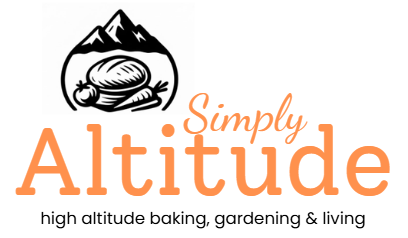Starting Your Garden From Seed
Approaches to starting your garden can vary widely with one of the first choices being whether to start with seeds or starter plants. There are advantages to each and most gardeners fall into one category or another. In this post we’ll examine the advantages and disadvantages of starting from seed.
Seeds
There seems to be an inherent sense of satisfaction that come from growing a plant from seed. You start out with raw materials (soil, seed, water, light) and from that you grow and nurture a plant that gives veggies back to you. You feel a connection to that plant and a sense of pride in doing it yourself.
Growing from seed has many advantages, including:
It’s a great family activity. Once children are old enough to listen and poke a hole in the dirt, they can help plant seeds. They love watching them grow and there’s nothing like watching a young one enjoy a harvest they helped plant.
Seeds, for the most part, are inexpensive. In the spring you can walk into most mega-marts, home improvement stores, grocery stores, etc and find seeds from large corporate producers. These seeds are cultivated for successful growing across multiple regions and come with handy planting, sun, and watering tips right on the package. The varieties available will likely be pretty hardy and easy to grow, if not somewhat generic. If you are interested in growing for your region, however, seek out local garden store, seed exchanges and even larger complexes such as universities, botanic gardens and online resellers of heritage varieties to source seeds. You might find regional selections well suited to your environment which have been cultivated locally for hundreds of years.
Weather conditions can be overcome. Even when the weather outside is hostile for gardening, you can start seeds inside.
Seeds require little space to begin with. There are a variety of indoor greenhouses available which have small footprints and can be augmented with grow lights.
Failure is a (cheap) option. If you start too soon, overplant, under/over water, etc and manage to lose some of your seedlings your initial investment is minimal and the majority of materials can be reused – even if that only means tossing them in your garden bed as fertilizer.
Some vegetables are best started from seed when they don’t transplant well. Root vegetables such as beets, radishes and carrots should be started from seed and planted directly into the garden bed, then thinned as needed to promote success. Other plants whose root structure tends to spread quickly and can be easily disturbed, like corn, some beans, cucumber and other vining veggies should also be either started from seed directly in the garden bed or timed right when using starter plants.
They are easy to stagger. When planting crops such as cilantro which has a short life cycle between harvestable and going to seed, it is nice to be able to stagger seedlings a couple weeks apart so that you will have fresh plants to transplant when you need to pull a blown plant.
They can be stored from year to year – just remember to age out your packets accordingly! They can also be stored in a relatively small space and with a little creativity (see our blog post here) you can even have fun storing them.
You can harvest seeds from most plants you plant. Whether they started from seed or from store bought starters, there is a sense of satisfaction when you go from seed to food to seed again.
While seeds have many advantages, there are disadvantages as well. These include:
More planning is needed. Seed starting takes time and a well-developed understanding of the weather patterns in your area. A common over-zealous gardener seed lifecycle goes something like this (especially at altitude): The first nice week of weather after cold winter days you break out your seed vault and greenhouse. Seeds go in your starter trays and the joyous growth cycle begins. Unfortunately, winter wasn’t done. That pesky groundhog works against you. Snow and frost keep showing up in the forecast. Your cute little seedlings have broken through the soil and are now straining against the confines of the starter tray. Root balls get tangled. Weather finally clears and the majority of your seed starts are done for. You head to the store to buy starters instead.
They do, eventually, age out. With proper storage your seeds should last two to three years from the package date. If you lose track of the package date or accidently mix multiple packages together you could easily end up with a disappointing seed starter experience.
Spacing requirements need to be considered. It can be difficult to visualize the space needed when transplanting from starter beds to the garden. Once again, the curse of the over-zealous seed starting gardener can strike and you end up having to thin out half of your seed starters when your garden bed becomes overgrown.
Seeds take time. As mentioned above, if you misjudge the season by a week or two your whole seed starter crop may end up as fertilizer instead of food.
Growing season considerations. High altitude environments tend to have a shorter growing season. Starting from seed can cut into this time period and reduce your yield. This is especially true if you are not able to start indoors.
Seedlings started indoors require a transition period – several days where you take the plants outside during different parts of the day to allow them to acclimate to the environment.

